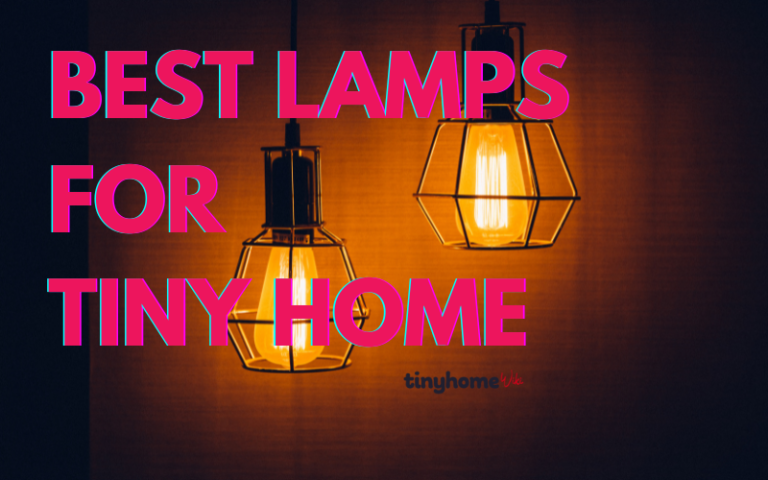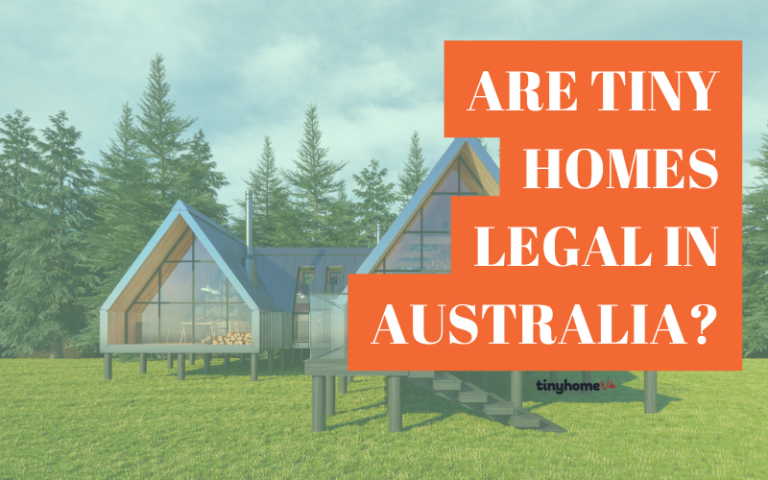Are Tiny Homes Legal in Canada? A Guide to Canadian Regulations and Building Codes
Tiny homes have been gaining popularity in Canada in recent years, but many people are still unsure about the legalities surrounding them.
Whether tiny homes are legal in Canada is complex, as different regulations and bylaws depend on the province and municipality.
According to the Ontario Building Code, tiny homes are legal if they meet certain requirements.
These include having a minimum size of 188 square feet, a living/sleeping area, a bathroom with a shower or bath, and a cooking area with running water.
The tiny home can be on wheels or not if it complies with the building code.
However, other provinces may have different regulations, so it is important to research and understand the laws in your specific area before building or buying a tiny home.
Overall, the legality of tiny homes in Canada is a topic that requires careful consideration and research.
While they may be legal in some areas, it is important to understand your province and municipality’s specific regulations and bylaws before embarking on a tiny home project.
Tiny Homes: A Brief Overview
Tiny homes have become popular in Canada due to their affordability, sustainability, and flexibility.
A tiny home is generally defined as a less than 400 square feet dwelling unit.
In Canada, tiny homes are not yet recognized as a separate housing category under the building codes and regulations. However, they can be built and used as long as they comply with the existing codes and standards.
According to the Ontario Building Code, a tiny home can be used as a separate dwelling unit on a property and can be on wheels or a foundation.
The minimum size for a separate dwelling unit that can be used year-round is 188 square feet.
It is important to note that not all tiny homes are legal in Canada.
For instance, campers, recreational vehicles, and other structures used in seasonal are not considered tiny homes.
Some municipalities have zoning bylaws that inadvertently create incentives for non-compliance with building codes and standards.
Overall, tiny homes offer a unique housing option for those looking for a simpler and more sustainable lifestyle.
While they are not yet recognized as a separate housing category in Canada, they can be built and used as long as they comply with the existing codes and standards.
Legal Status of Tiny Homes in Canada
Tiny homes are popular in Canada, but their legal status varies.
While some provinces and territories have specific regulations for tiny homes, others do not.
According to the Ontario Building Code, a separate dwelling that can be used year-round must have a minimum size of 188 sqft.
Tiny homes on wheels or not can meet this requirement and are, therefore, legal in Ontario.
In British Columbia, tiny homes are legal in some regions, but the provincial building codes do not specifically address them.
However, many tiny homes comply with zoning and provincial codes and standards for permanent residential use.
In other provinces and territories, the legality of tiny homes is less clear.
For example, in Quebec, there are no specific regulations for tiny homes, but they may be considered illegal if they do not meet the minimum size requirements for a dwelling.
It is important for those interested in owning a tiny home to research the specific regulations and zoning bylaws in their area to ensure that their dwelling is legal.
Building codes, zoning bylaws, and municipal regulations can vary significantly from region to region, so seeking professional advice and guidance is crucial before embarking on a tiny home project.
Overall, while tiny homes are not illegal in Canada, their legal status can be complex and varies across the country.
It is important to thoroughly research and consult with professionals before building or purchasing a tiny home.
Building Codes and Zoning Laws
Tiny homes in Canada must comply with the building codes and zoning laws in their respective provinces and territories.
According to the Ontario building code, a tiny house must have a minimum size of 188 sqft if it is going to be used as a separate dwelling that can be used year-round.
This means that the tiny house can be on wheels or not.
Municipal zoning by-laws also set property requirements and impact planning for a tiny home.
Zoning by-laws provide important information, such as whether tiny homes are permitted in the area in which you live.
It is important to check with your local municipality to ensure that your tiny home complies with the zoning by-laws in your area.
Despite their size, tiny homes must comply with the health and safety requirements of Ontario’s Building Code, municipal zoning, and other local by-laws.
Tiny homes must also have necessary servicing such as water and sewage.
It is important to note that building codes and zoning laws can vary between provinces and territories, so it is important to research and understand the specific regulations in your area.
Overall, living legally in a tiny home in Canada is possible as long as the building codes and zoning laws are followed.
It is important to do your research and ensure that your tiny home complies with your area’s regulations to avoid any future legal issues.
Provincial Regulations
Each province in Canada has its own set of regulations regarding tiny homes. In Ontario, for example, tiny homes are legal as long as they meet certain requirements.
According to the Ontario Building Code, a tiny home must have a minimum size of 188 sq. ft. and can be on wheels.
It must also have a living/sleeping area, a bathroom with a shower or bath, and a cooking area with running water.
Other provinces may have different regulations.
In British Columbia, for example, a tiny home must meet the requirements of the British Columbia Building Code, which includes safety and structural standards.
In Quebec, tiny homes are subject to the Quebec Building Act and must meet certain safety and health standards.
Researching the regulations in your province before building or buying a tiny home is important.
Failure to comply with regulations can result in fines or legal issues.
In addition to provincial regulations, there may also be municipal bylaws to consider.
Some municipalities may restrict the size or location of tiny homes or require permits and inspections.
It is important to check with your local government before building or parking a tiny home on your property.
Overall, while tiny homes are legal in Canada, ensuring they meet all necessary regulations and requirements before building or buying one is important.
Tiny Homes on Wheels vs. Stationary Tiny Homes
When it comes to tiny homes, one of the biggest decisions is whether to build a tiny home on wheels or a stationary tiny home.
Both options have pros and cons, ultimately depending on the individual’s needs and preferences.
Tiny Homes on Wheels
Tiny homes on wheels are often considered more flexible than stationary tiny homes.
They can be easily transported from one location to another, which is ideal for those who enjoy traveling or want the ability to move their home with them.
Additionally, tiny homes on wheels are often exempt from certain zoning and legal concerns that apply to traditional homes.
However, there are also some downsides to tiny homes on wheels.
For example, they may not be as stable as stationary tiny homes and may require more maintenance due to their mobility.
Additionally, some municipalities may not allow tiny homes on wheels to be parked or lived in, so it’s important to research local regulations before building or purchasing a tiny home on wheels.
Stationary Tiny Homes
Stationary tiny homes are built on a foundation and are not designed to be moved frequently.
They offer a more permanent living solution and may be better suited for those who want to put down roots in a specific location.
Additionally, stationary tiny homes may be more stable and require less maintenance than those on wheels.
However, there are also some downsides to stationary tiny homes.
They may be subject to more zoning and legal concerns than tiny homes on wheels and may not offer the same level of flexibility regarding location.
Ultimately, deciding between a tiny home on wheels or a stationary tiny home comes down to personal preference and individual circumstances.
It’s important to carefully consider each option’s pros and cons before deciding.
Benefits of Legalizing Tiny Homes
Legalizing tiny homes in Canada can benefit both the homeowners and the community.
Here are some of the advantages:
Affordable Housing
One of the significant benefits of tiny homes is their affordability.
With the rising cost of housing in Canada, tiny homes offer a more affordable option for people who cannot afford traditional homes.
Legalizing tiny homes can solve the affordable housing crisis in Canada, especially in urban areas where housing prices are skyrocketing.
Sustainable Living
Tiny homes are often built with sustainable materials and designed to be energy-efficient.
They require less energy to heat and cool, reducing homeowners’ carbon footprint.
Additionally, tiny homes often have a smaller environmental impact during construction, requiring fewer resources and producing less waste.
Legalizing tiny homes can encourage sustainable living and help Canada achieve its environmental goals.
Flexibility
Tiny homes are versatile and can be built on wheels or a foundation.
This flexibility allows homeowners to move their homes easily, especially for people who need to relocate frequently.
Additionally, tiny homes can be used as secondary dwellings on existing properties, providing an affordable housing option for family members or renters.
Legalizing tiny homes can provide more flexibility in housing options for Canadians.
Economic Benefits
Legalizing tiny homes can also bring economic benefits to communities.
Tiny homes can create jobs in the construction industry and support local businesses that supply materials and services for tiny homes.
Additionally, tiny homes can increase property values and attract tourism, as people are interested in unique and innovative housing options.
Legalizing tiny homes in Canada can provide Canadians with a more affordable, sustainable, and flexible housing option while also bringing economic benefits to communities.
Challenges in Legalizing Tiny Homes
Despite the growing interest in tiny homes, legalizing them in Canada has been challenging.
Several factors contribute to this challenge, including:
Zoning and Building Codes
One of the main challenges is zoning and building codes.
Many municipalities have minimum size requirements for dwellings, making building and living in a tiny home difficult.
In addition, building codes often require certain safety features, such as a minimum ceiling height and fire separation between units, which can be difficult to achieve in a tiny home.
Lack of Standardization
Another challenge is the lack of standardization.
No standard definition of what constitutes a tiny home makes it difficult for municipalities to regulate them. In addition, there is no standard building code for tiny homes, making it difficult for builders to ensure that their homes meet the necessary requirements.
Land Use and Ownership
Tiny homes also face challenges related to land use and ownership.
Many municipalities have restrictions on where tiny homes can be located, making it difficult to find a suitable place to live.
In addition, tiny homes on wheels are often considered recreational vehicles, which can limit their use as permanent dwelling.
Resistance from Local Governments
Finally, there is often resistance from local governments to legalize tiny homes.
Some officials view tiny homes threatening the status quo and hesitate to change existing regulations.
In addition, there may be concerns about the impact of tiny homes on property values and the overall character of a neighborhood.
Overall, while there is growing interest in tiny homes in Canada, several challenges must be overcome to legalize them.
These challenges include zoning and building codes, lack of standardization, land use and ownership, and resistance from local governments.
Case Studies
Several case studies illustrate the different approaches that various provinces and municipalities have taken towards tiny homes in Canada.
Case Study 1: Ontario
In Ontario, tiny homes are legal as long as they meet the minimum size requirement of 188 square feet for a separate dwelling that can be used year-round.
The Ontario Building Code allows for tiny homes on wheels or a foundation as long as they comply with zoning and provincial codes and standards for permanent residential use.
Case Study 2: British Columbia
In British Columbia, tiny homes are not explicitly addressed in provincial legislation.
However, municipalities can regulate land use and building standards within their jurisdiction.
The Regional District of Nanaimo (RDN) has taken steps to allow tiny homes on wheels as secondary dwellings on residential properties, subject to certain conditions.
Case Study 3: Quebec
In Quebec, tiny homes are not explicitly regulated but must comply with the Quebec Building Code and municipal bylaws.
Montreal has taken steps to allow tiny homes in certain areas, such as in eco-villages and as secondary residences on existing properties.
It is important to note that regulations and bylaws regarding tiny homes can vary widely depending on the province and municipality.
It is recommended that individuals interested in building or living in a tiny home consult with local authorities to ensure compliance with all relevant regulations.
Conclusion
In conclusion, the legality of tiny homes in Canada remains a complex and evolving issue.
While some provinces and municipalities have made progress in recognizing tiny homes as viable housing options, much work must be done to ensure they are fully integrated into the regulatory framework.
The lack of clear and consistent regulations nationwide is a major barrier to the widespread adoption of tiny homes.
As a result, many people interested in living in a tiny home are forced to navigate a confusing and often contradictory patchwork of rules and regulations.
Despite these challenges, there are many reasons to be optimistic about the future of tiny homes in Canada.
As more people become aware of the benefits of this housing option, there is likely to be increased pressure on governments to develop clear and consistent regulations that support the growth of the tiny home movement.
In the meantime, it is important for anyone considering building or living in a tiny home to do their research and understand the regulations in their specific area.
This may involve consulting with local officials, hiring a lawyer or other legal professional, or joining a community of tiny home enthusiasts who can offer support and guidance.
Overall, while the legal landscape for tiny homes in Canada is still evolving, it is clear that this housing option has the potential to play an important role in addressing the country’s housing affordability and sustainability challenges.






